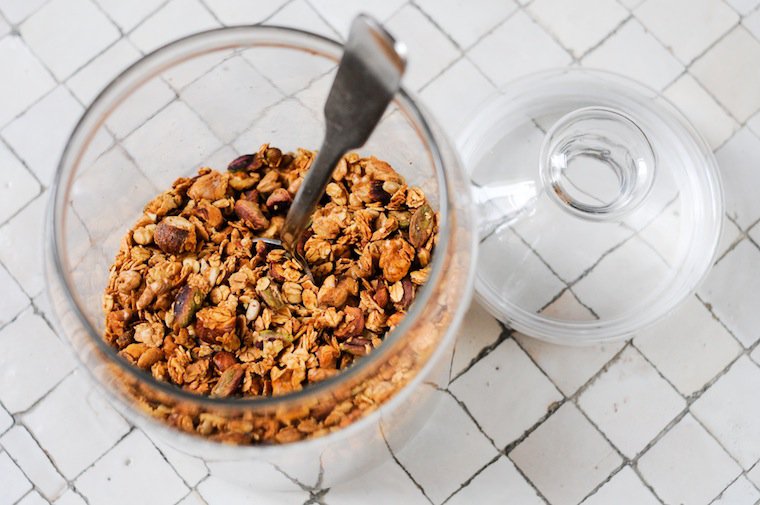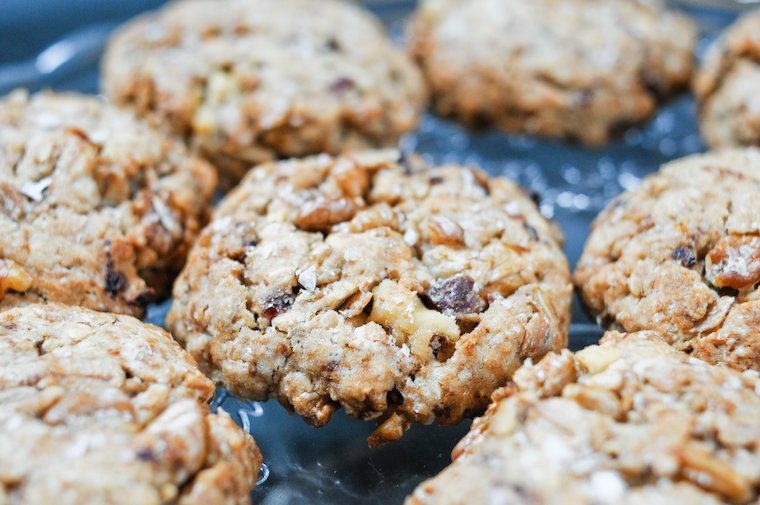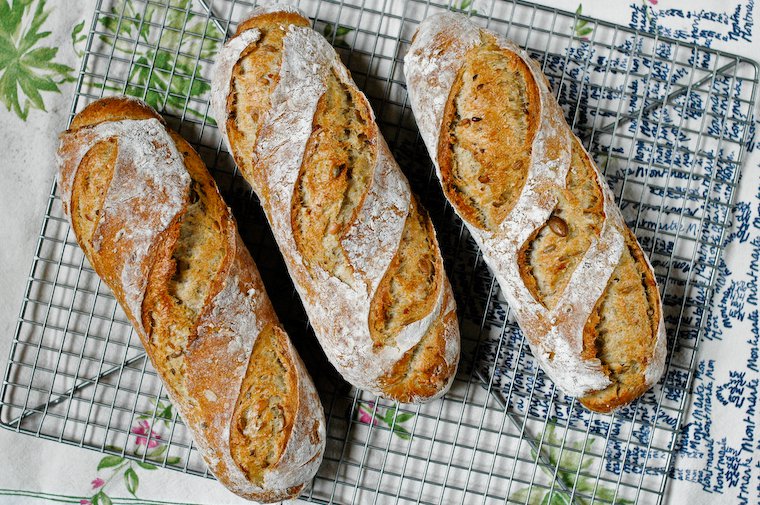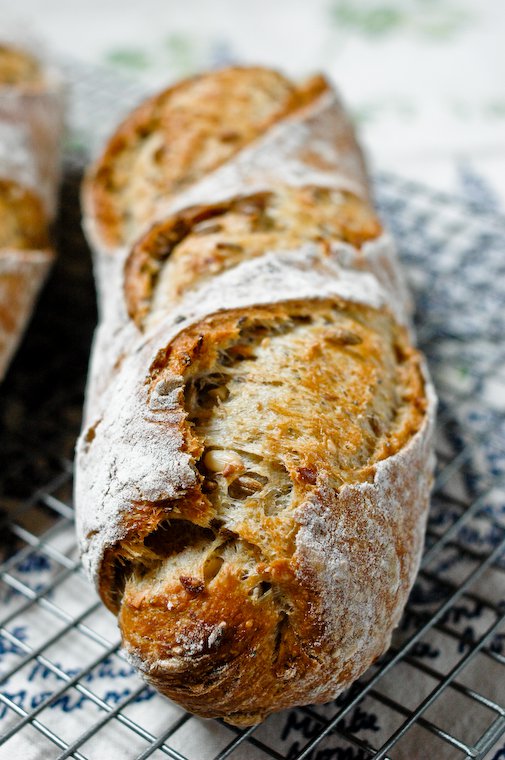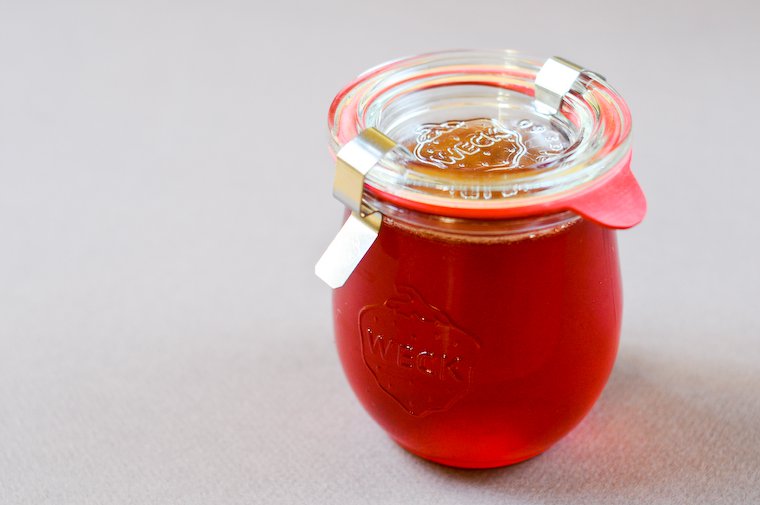You may remember from my posts about the quince and almond cake and the quince jelly that I have a friend with a house in the country and a generous disposition.
On a Sunday night a couple of weeks ago, she was driving back to Paris after spending a weekend there, and she announced she had more quinces and also some walnuts for me. The bag is quite heavy, she said, did I want her to drop them off? That would be perfect, I replied, and we agreed to meet in a spot that wouldn’t take her too far out of her way, and where she could double-park for a minute without incurring the wrath of other drivers.
Still, we had to be quick: she pulled the bag she had prepared for me out of the passenger’s seat and plopped it on the sidewalk. It’s heavy, she repeated, is it going to be okay? I lifted the bag. Oof, it was heavy — a large canvas bag filled with about twelve kilos of in-shell walnuts and maybe six of quinces — but it didn’t feel impossible to carry. You know, I do yoga, and I beat my egg whites by hand, that sort of thing. I assured her I would be fine and thanked her before she drove away.
Crunchy on the rims and tender in the middle, these cookies are altogether satisfying on a dark fall afternoon, when it feels like the sky has dropped several floors.
And now it was just me and the bulging bag, a few blocks — uphill blocks, naturally — from my apartment. It was quite late, the bag was heavier with every step, the handles coarser on my bare palms, and as I stopped and started, shifting the weight onto one leg or the other, I also had more of an audience that I would have preferred. (Have you noticed how much harder hard things seem when someone is watching mirthfully?)
But I made it home with both arms still plugged into their shoulder sockets, and now I get to doubly enjoy this incredible profusion of fresh walnuts.
I have given some to neighbors and visiting friends, and we’ve been working our way through the rest of them with dedication — eating them straight, on their own or with fruit and cheese, in grated carrot salads, sprinkled on Hokkaido squash soups, slipped into pizzas and gratins, whizzed to make dips and spreads, added to granola… Walnuts are said to be the ultimate brain food, and if that is the case, I fully expect to be on a Nobel prize shortlist sometime soon.
I’m not sure if the selection jury will think this is relevant, but I have become pretty good at shelling walnuts in a speedy fashion, and my technique is a simple but efficient self-taylorization of the process: I start by cracking all the walnuts (crack crack crack), then I pry all the shells open to extract the nugget of walnut meat (pry pry pry), and finally I split the walnut halves delicately to remove the bark-like partition in the middle (split split split).
In addition to the uses listed above, I have also been baking with them, as for these wholesome cookies, chunky with walnuts and dates.
The recipe is based on one for chocolate and orange cookies published by Nolwenn in the very good L’Atelier Bio cookbook, and written up praisingly by Clea some months ago.
I’ve taken Nolwenn’s basic recipe, which happens to be dairy-free and gluten-free, and played with it: I’ve replaced the chocolate chips and candied orange rind with walnuts and diced date paste, I’ve added soaked flax seeds as a binding agent, substituted rolled spelt for the rolled quinoa (which means they’re no longer gluten-free), added some roasted grain “coffee” as a spice to amp up the flavor of the walnuts and dates, and sprinkled salt flakes on each cookie, which provides delicious salty jolts when you eat them.
These cookies bake into a wonderful texture, crunchy on the rims, tender in the middle, and altogether satisfying on a dark fall afternoon, when it feels like the sky has dropped several floors.
Have you tried this? Share your pics on Instagram!
Please tag your pictures with #cnzrecipes. I'll share my favorites!
Walnut and Date Cookies Recipe
Ingredients
- 15 grams (2 tablespoons) flax seeds
- 140 grams (5 ounces, about 1 cup plus 1 tablespoon) brown rice flour
- 80 grams (3/4 cup) rolled spelt (or other rolled grain, such as quinoa or oats)
- 1/2 teaspoon baking powder
- 1 teaspoon roasted grain coffee (or instant coffee powder)
- 50 grams (1/4 cup) unrefined light cane sugar
- 30 grams (2 tablespoons) rapadura sugar
- 90 grams (3 ounces, about 3/4 cup) walnut halves, roughly chopped
- 60 grams (2 ounces) date paste, finely diced
- 60 ml (1/4 cup) vegetable oil
- 80 ml (1/3 cup) oat milk (or other milk)
- salt flakes
Instructions
- Place the flax seeds in a small bowl, add 2 tablespoons water and let stand for 30 minutes, until the mixture has gelled.
- Preheat the oven to 180°C (360°F) and line a baking sheet with a silicone baking mat or parchment paper.
- In a medium mixing bowl, combine the flour, rolled spelt, baking powder, coffee, sugars, walnuts and date paste.
- Add the flax seeds, oil, and milk, and stir them in until the dough comes together. It should be moist enough that you can shape cookies with it, but not so moist as to be gooey. Add a little milk or flour if necessary to adjust the consistency.
- Scoop out pieces of dough, about the size of a golf ball, and shape into slightly flattened cookies. Arrange on the prepared baking sheet, giving them a little room to expand. Sprinkle the tops with a little salt.
- Bake for 20 minutes, until set and golden brown. Let cool on the baking sheet.
- The cookies taste a little better on the day they're baked, but they also keep well for a few days in an airtight container.
3.1
https://cnz.to/recipes/cookies-small-cakes/walnut-and-date-cookies-recipe/ Unless otherwise noted, all recipes are copyright Clotilde Dusoulier.


